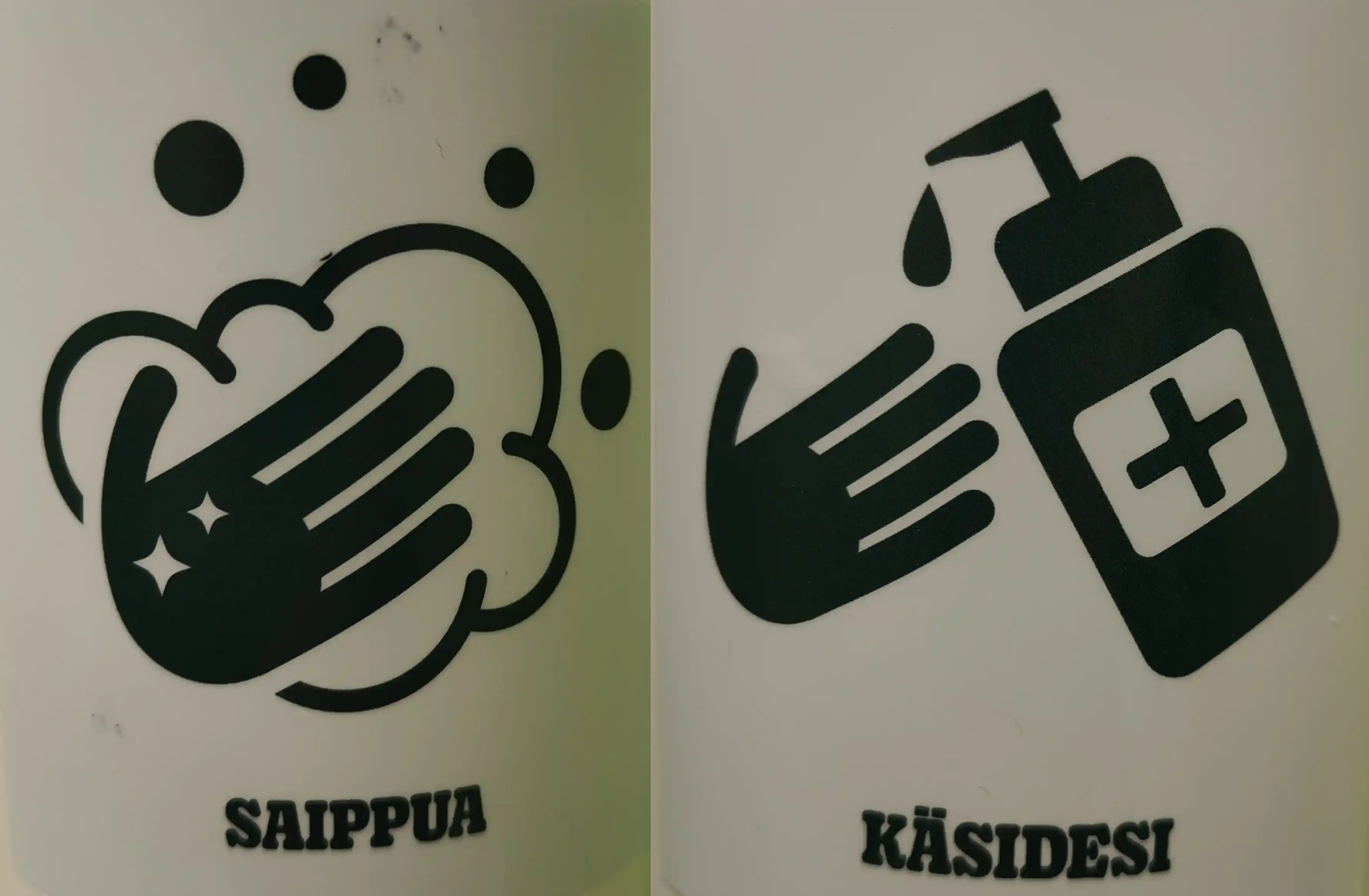
This two signs were found on two dispensers in a toilet of a children's activity park in Espoo, Finland. They were located on two sides of the wash basin on dispenser bottles, and label both soap (SAIPPUA) and disinfectant (KÄSIDESI)1.
Ever since COVID, hand sanitizer is an almost omnipresent object in any commercial area and more common than soap as the latter tends to require a faucet and a sink as well. But in bathrooms where both are usually present it is important to differentiate these two as they are used differently.
The signs in here caught my attention as the place was not only multilingual with many foreigners, but also had a considerable amount of illiterate children. This makes for an interesting linguistic landscape as the activity park had various important safety rules that had to be posted on the various slides, trampolines and whatnot.
In this soap/disinfectant signage we note that the sole language used is in Finnish. So the capability of the signs to convey information to non-Finnish speakers relies solely on the visual components of the signs. And I think the images do a pretty god job at it! The soap image shows, slightly anachronistically, a hand sparkling in cleanliness while foam and bubbles are seen around it. To me the image conveys quite well the activity of rubbing hands together with soap, even without any motion lines. The disinfectant is a very different kind of beast. We don't display the act of rubbing, but instead show a drop of liquid coming from a pump bottle with a big plus sign on it. The "plus sign" is naturally the semi-universal red cross -style sign signaling medical concepts, displayed here in black and white. So in particular in contrast (and context) we get here a good distinction between soap and disinfectant.
-
The Finnish language has a very strong distinction between the "formal language" and the one spoken colloquially, though apparently not so harsh as the Norwegian have with their Bokmål. Here I think that "Käsidesi" is a word that started as a colloquial expression, a sort of portmanteau of "käsi" (hand) and "desinfiointiaine" (disinfectant). But you see it used in more and more formal texts, meaning that it is apparently rising to the status of an "official word". (The "original official word" would be "käsihuuhde", which I would translate to something like "hand-rinse".) ↩